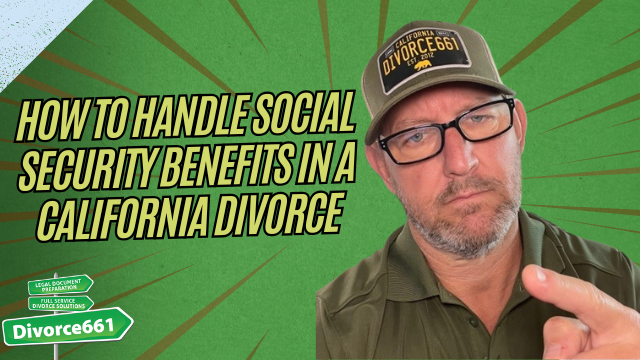How to Handle Social Security Benefits in a California Divorce
Why Social Security matters in a divorce
Social Security is a federal program. That means California divorce courts do not divide Social Security benefits the way they divide property or retirement accounts. Still, Social Security can be a significant part of long term income after divorce, especially after a long marriage. Knowing your rights now can prevent you from missing out on future income.
The key rule: the 10 year marriage requirement
If you were married for at least 10 years, you may be entitled to collect benefits based on your ex spouse’s work record. You can qualify even if your ex spouse has remarried. To claim a spousal benefit on an ex spouse’s record you generally must be unmarried and at least 62 years old. In many cases the spousal benefit can be more than the benefit you would receive based on your own work history.
“If you were married for at least 10 years, you may be entitled to collect benefits based on your ex spouse’s work record, even if they’ve remarried.”
Real client example
We recently helped a client who did not know she could claim on her ex husband’s record. She had been married for over 20 years, was over age 62, and was not remarried. She qualified for a spousal benefit that turned out to be higher than the benefit based on her own earnings. That additional Social Security income improved her long term financial security in retirement.
What we do to help
We do not handle Social Security benefits directly, because those benefits are administered by the Social Security Administration. What we do is make sure you understand your rights and that your divorce paperwork reflects your long term retirement planning needs. That includes:
- Identifying whether you meet the 10 year rule and other eligibility factors.
- Ensuring retirement and benefit considerations are addressed in settlement paperwork.
- Explaining how claiming decisions can affect your future income and when you should consult the Social Security Administration.
Practical steps to protect your Social Security options
- Confirm the length of your marriage. If you were married 10 years or longer you may qualify for an ex spousal benefit.
- Check your current marital status. You generally must be unmarried to claim on an ex spouse’s record.
- Know your age. Many spousal claims require you to be at least 62 to begin benefits.
- Compare benefit amounts. Request your own Social Security statement and compare it to an estimate of a spousal benefit to see which is higher.
- Address retirement planning in the divorce agreement. Make sure paperwork reflects any decisions that could affect future income.
- Contact the Social Security Administration when ready to claim. They will confirm eligibility and guide the application.
Common questions
Can I claim on my ex spouse even if they are remarried?
Yes. Being remarried does not prevent you from claiming a spousal benefit on an ex spouse’s record as long as you meet the other eligibility rules.
Does the divorce court divide Social Security?
No. Social Security is not a divisible asset in state divorce proceedings because it is a federal benefit. That is why understanding eligibility and timing is so important.
Next steps
If you are going through a divorce and want to make sure your future Social Security options are protected, get the facts now. Review your marriage length, your age and marital status, and address retirement and benefit concerns in your divorce paperwork. For guidance specific to your situation, visit divorce661.com and schedule a free consultation. We will help you understand what to expect now and down the road so you do not miss out on future income.

